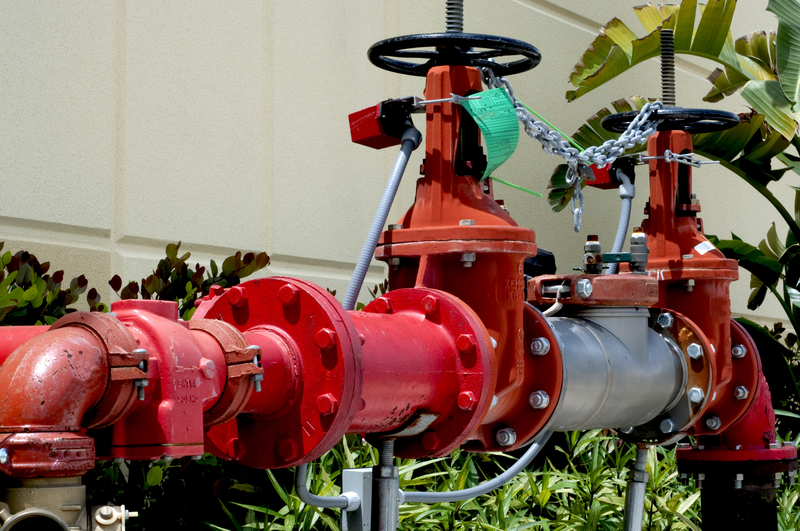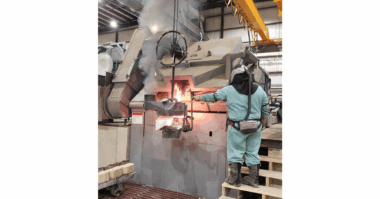Also known as non-return, one-way, and clack valves, check valves are different from other types of valves in their ability to pass fluid in solely one direction. This sort of function is essential for a variety of safety applications, as well as for preventing overflow.
How Check Valves Function
Operating on a two-port system, check valves have an opening where fluid or gas is drawn in to the first port. It is then regulated by a mechanism separating the two ports that allows water to be drawn from the first to the second port and out an opening without allowing fluids to reenter the first port.
Types of Check Valves
Ball Check Valve – This check valve uses a ball covering a round opening to separate the first and second port. When fluid is drawn in, the ball is pushed forward. When the fluid is pushed back, the ball is pressed into the round opening, which creates a seal and allows all fluid to flow out the second port in the intended direction.
Swing Check Valve – One of the most common types of valves, a swing check valve is used inside household toilet tanks, as well as in many other areas. Instead of a ball controlling flow, this valve uses a small door on hinges that opens when water is drawn in and closes when the flow of water is stopped, thereby not allowing any fluid to drain out of the valve’s entrance. This type of valve is also sometimes referred to as a tilting disc check valve.
Disc Check Valve – A more complex check valve, it functions with a disc mounted on a spring. Pressure from the inlet opens the disc by stretching the spring. When the flow stops, the spring is compressed, and the disc returns to the closed position.
Split Disc Check Valve – Also referred to as a dual plate check valve, it operates with a door that is split down the middle and only folds one way to regulate flow. When fluid enters the valve, the pressure causes the hinges of the door to open. When flow is stopped the door is shut.
Diaphragm Check Valve – A flexing rubber mechanism is used to regulate the flow of water on this check valve. It is activated when pressure on the upstream side is greater than that of the downstream side. When the pressure returns to a certain level, the rubber diaphragm flexes back into the closed position. An advantage of this type of check valve is the option to choose the pressure differential that controls the diaphragm for a variety of applications.
Wafer Check Valve – These kinds of valves can work with a swing, disc check, split or other mechanism to regulate flow. The wafer check valve differs in its small size that allows it to fit between a set of flanges.
The above are just some of the most common types of check valves used in industrial applications, with many more available and future developments in the works.
Why Use a Check Valve Instead of Others?
With each industry needing different fluids and/or gases transported over different landscapes, lengths, and at different temperatures, check valves can have a variety of benefits.
- Ball check valves are mostly used to move liquids, since the ball mechanism is not the best for creating an airtight seal.
- Swing check valves can wear out prematurely due to the force used when closing the valve. As a result, many swing check valves come with a non-slam feature that regulates how the valve closes.
- Swing check valves often feature a larger pressure drop than across other types.
- Disc check valves usually cost less than other standard valves since they are usually smaller and lighter. They can be installed in any position, including vertical pipelines.
- Disc check valves do not perform well for applications where there is heavily pulsating flow.
- Split disc check valves are used when the size and pressure drop of swing and disc check valves are too great and limit functionality.
- Split disc check valves are advantageous in applications that need large check valves, low pressure drops, lower operating pressures, and/or for applications that need check valves installed in any position, even vertical pipes.
- The rubber and other materials used in a diaphragm check valve do not operate well at extreme temperatures, which limit the valve to working with fluids between 180°C and 16 bar.
- Due to their small, sleek design and relatively small production cost, wafer valves have become the valve of choice for a wide range of applications.
Sources:
- http://piping-info.blogspot.com/2012/06/types-of-check-valves-and-description.html
- http://www.gwcvalve.com/blog/what-are-wafer-check-valves-and-how-do-they-work/
- http://www.spiraxsarco.com/resources/steam-engineering-tutorials/pipeline-ancillaries/check-valves.asp
- http://www.ehow.com/how-does_5001673_water-check-valve-work.html
- http://en.wikipedia.org/wiki/Check_valve
- http://www.wisegeek.com/what-is-a-check-valve.html




